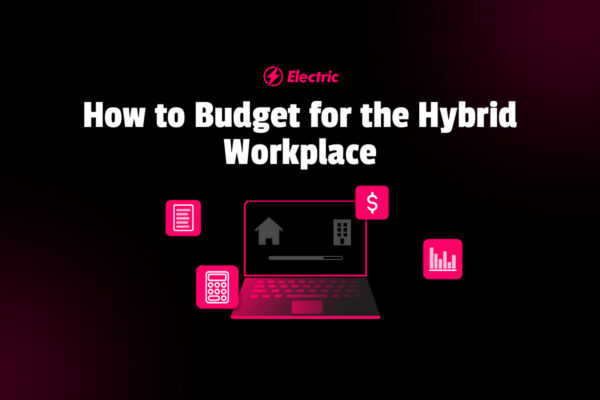
The year 2020 is in the rearview mirror, and most companies are planning their post-pandemic workplace. But one thing is clear, though — there’s a new office culture in the offing — working remotely.
And with proper execution, this new office culture creates a workforce of happy and dedicated employees.
Working remotely skyrockets productivity, job satisfaction, in addition to helping workers strike the elusive work-life balance. But it’s not without its downsides. Employees still crave the in-person interaction of the traditional office space, and this affects productivity.
Leveraging Lessons from the Remote Workplace
The stay-at-home ordinances set in place to combat the pandemic sent companies scrambling. Most firms had no infrastructure in place to support a remote work environment. That meant making the most of available technology and scrambling to sign up for the most popular solutions.
Naturally, the teething problems characterized the initial days as companies dove headfirst into uncharted waters. Most resorted to using cumbersome tools, which affected efficiency and productivity.
However, after a year of trials, mishaps, and successes, most organizations have the remote working culture down to a tee. They’ve since learned to pick solutions based on their unique needs instead of a product’s popularity. And they have results to show for it.
With the danger posed by the pandemic receding, the most restrictions are being lifted, and the world is slow returning to normal. Worn down by the isolation of working from home, most people are eager to return to the office. But something has changed, creating a catch-22 situation for most organizations.
Do they throw out the gains and the lessons they’ve made from a year of working remotely and fall back to the default office routine? Should they ignore the benefits of working remotely and subject employees to tedious daily commutes?
Unwilling to relinquish the benefits gained from working remotely, most companies are bundling the lessons from 2020 with the previous office culture to create a hybrid workplace.
The Emergence of the Hybrid Workplace Model
Pre-pandemic, the office was a space where people converged to get work done. Post-pandemic, the office is likely to be a secondary space for employees to gather and collaborate.
Workers are likely to split their time between working from home and the office. Hybrid workplaces enable employees to work productively from both locations. These models meld the best of a physical office with the flexibility of working remotely. It means retaining a physical office location but tweaking the office culture to allow employees to work remotely.
Naturally, shifting to a hybrid workplace model comes with a heavy reliance on technology. It places extra pressure on the IT department to procure the ultimate software solutions to support the firm’s needs. It means integrated solutions that support both remote working and office operations.
Thanks to the gains made in 2020, most IT leaders expect their budget to increase or remain the same in 2021. However, a survey by Gartner predicts a 6.2% growth in global IT spend.
Companies must secure efficient technological solutions if they’re to enjoy the trimmings of a hybrid workplace. The solutions should allow comprehensive project management, support collaborative work, and improve productivity.
The Cost Savings & Expenses of a Hybrid Workplace
The emergence of a hybrid workplace model has the potential to create both new cost savings and expenses for an organization. Below we’ve listed out some of the elements that could alter your organization’s spending as it relates to a hybrid workplace.
The cost savings of a hybrid workplace can come from:
-
Reduced need for office space
-
Reduced need for physical office supplies
-
Reduced need for office furniture
-
Increased employee retention
-
Employees’ commuting & transportation-related expenses
-
Employees’ reduced need for “office” clothing
The expenses of a hybrid workplace can come from:
-
Maintaining office space(s) suitable for your co-located employees’ needs
-
Equipping employee home offices
-
Investments in technology for better hybrid meetings and collaboration (e.g. video conferencing, endpoints, etc).
How To Budget for the Hybrid Workplace
Before rushing out to adopt this new model, your organization must address the following points on how to budget for the hybrid workplace.
1. Ensure the Technology Matches Your Needs
Transforming your office space is an impactful change that goes beyond rearranging desks and doors. It’s crucial that you hire a professional firm with solid programming and space planning experience to help with the transformation.
It’s best if you don’t settle for a predetermined solution. It’s easy to get distracted by trends and fads, but they don’t substitute a good design. You want a solution that’s uniquely crafted to suit your organization’s needs.
Check with your staff as they have great insights into how the workplace functions. Get your employees’ perspectives early on to capture all the processes from the get-go.
With the industry feverishly trying to figure out the hybrid office model, there are numerous ideas out there. Evaluating internally helps you avoid the fads and pick the ultimate solution that’ll serve your firm’s specific needs.
2. Pick the Right Office Space
A new study from WeWork indicates 53% of employees want to work in the office 3 days per week or fewer—and when they do go in, 50% want to be there for less than 5 hours. Based on these findings, a premium office space is no longer requisite for your organization’s hybrid workplace budget.
You can downsize to a smaller space or move the office to a less competitive environment. If you expect fewer people coming to the office every day, then you should capitalize on that and reduce the cost of running your physical office. You can redistribute the cost savings from lease and utility bills towards building a robust digital infrastructure.
Your choice of office equipment and devices should complement the needs of a hybrid workforce. That might mean doing away with desktops in favor of laptops and more mobile devices. Your employees can use these devices while at home and the office for a seamless working experience.
3. Pick the Appropriate Pricing Model for Your Needs
Your choice of services and service providers determine your capital expenditures and operating expenses moving forward. Luckily, most of the services and SaaS applications powering a hybrid workplace use a subscription model—that translates into lower upfront expenditure if you can incorporate them into your existing infrastructure.
Evaluate your employees’ usage of apps and licenses on a regular basis to see where you can adjust subscription models and tiers to suit your business’s actual needs.
4. Invest In Your Endpoints
According to a new IDC study, as organizations adopt a hybrid work strategy, they will need to invest in more advanced endpoint solutions. The study indicates that organizations with a robust commitment to digital transformation are investing in endpoints by outfitting them with cameras and headsets for their entire workforce.
The study also states that further investments are also being made in the management and security of endpoint devices, which are integral in enabling a hybrid work model.
5. Invest in Dedicated IT Support
Dedicated remote IT support is a crucial ingredient when adopting new systems and technology in the business environment. Despite even the most thorough onboarding process, hiccups are to be expected among employees. Having a dedicated IT team ensures problems are resolved quickly and effectively without affecting workflow.
Providers with real-time support are ideal for enabling productivity in a hybrid workforce. Getting a hold of the help desk to resolve a pressing issue allows your team to save time and improve efficiency.
At Electric, we exist to help you transition to a hybrid workplace by providing all the IT support you need in the process and beyond. IT powers hybrid work, and we power IT. We can give your organization a hand in transitioning into this new normal. Get in touch today to learn more.



